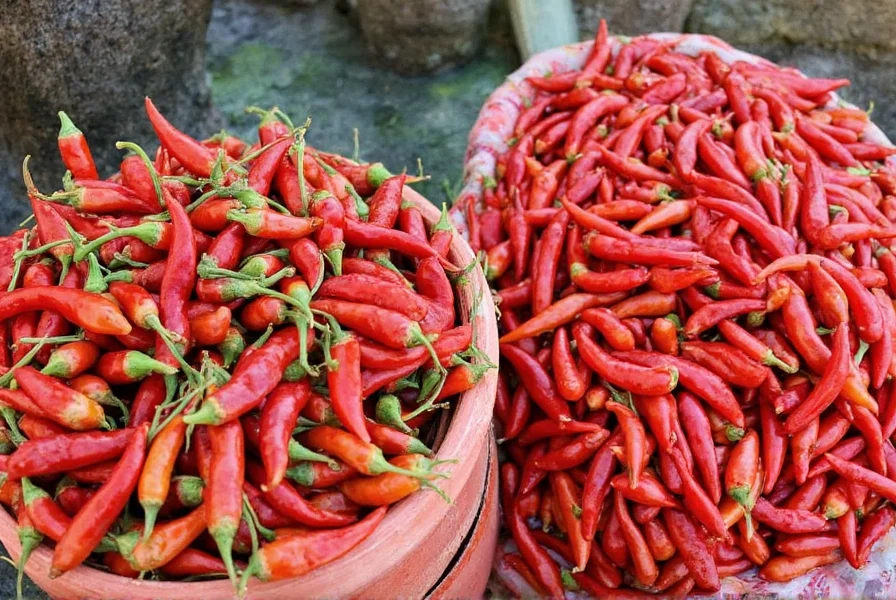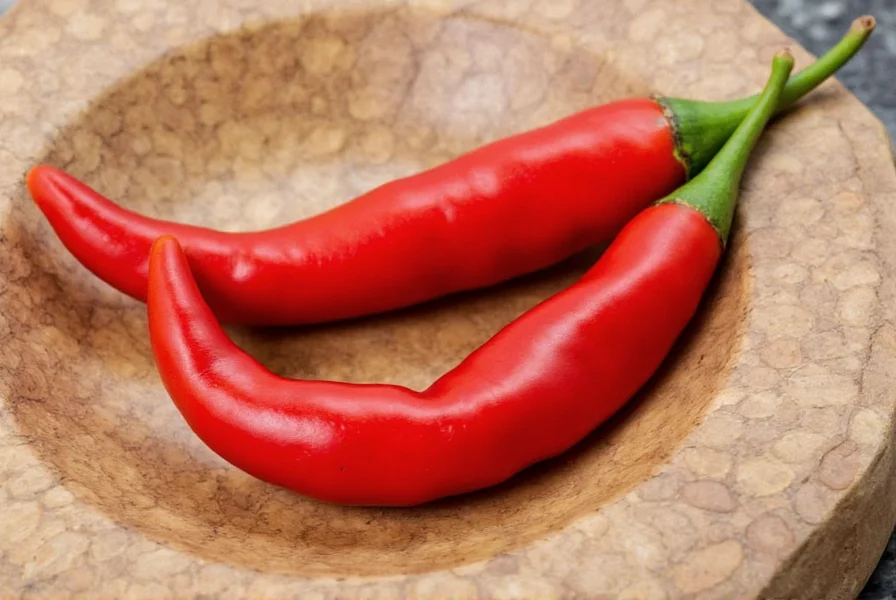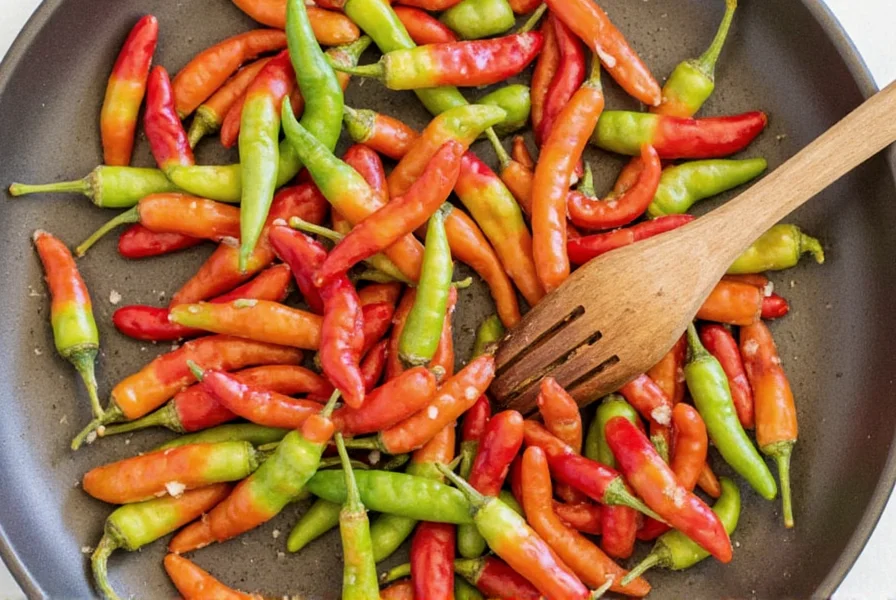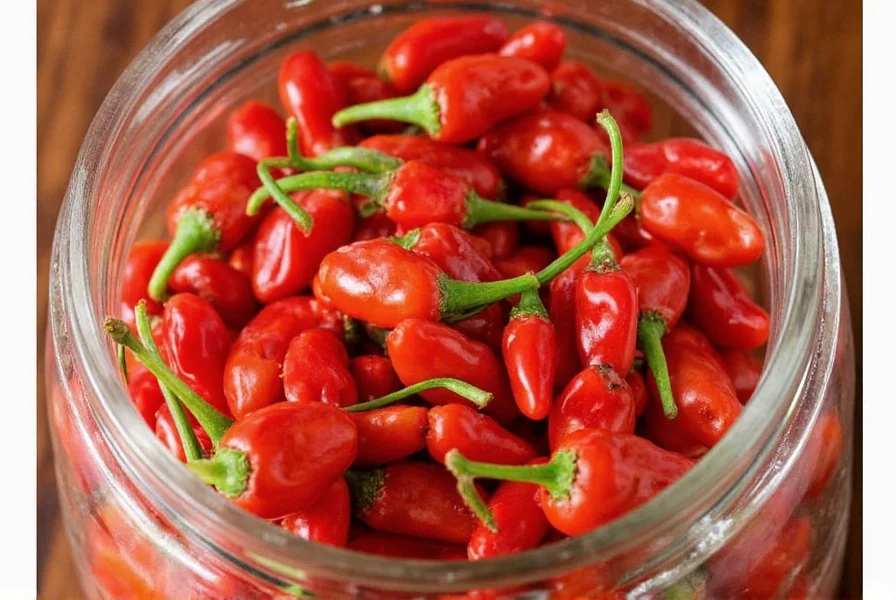Table of Contents
Introduction to Caribe Chile
Caribe Chile, also known as Caribbean Red Pepper, is a medium-to-high heat chili pepper originating from the Caribbean islands. With a Scoville rating of 50,000-100,000 units, it offers a unique combination of smoky, sweet, and tangy flavors that make it a staple in Caribbean and Latin American cuisines. This versatile pepper enhances salsas, stews, marinades, and grilled dishes while providing a balanced heat profile that doesn't overwhelm the palate.

Unlike many hot peppers that focus solely on heat, Caribe Chile delivers complex flavor notes that complement rather than dominate dishes. Its popularity stems from its ability to add depth to both simple and gourmet recipes while remaining accessible to home cooks.
Flavor Profile and Heat Level
| Chili Pepper | Scoville Heat Units | Flavor Profile |
|---|---|---|
| Jalapeño | 2,500-8,000 | Mild, slightly sweet, vegetal |
| Cayenne | 30,000-50,000 | Sharp, pungent, slightly smoky |
| Caribe Chile | 50,000-100,000 | Smoky, sweet, tangy, earthy |
| Scotch Bonnet | 100,000-350,000 | Fruity, floral, intensely hot |
| Habanero | 100,000-350,000 | Fruity, floral, intensely hot |
The Caribe Chile's flavor profile is characterized by its distinct smokiness balanced with natural sweetness and subtle citrus notes. Unlike habaneros or Scotch Bonnets that lean heavily into fruity intensity, Caribe Chile offers a more rounded flavor experience that works well in both savory and slightly sweet applications.
When fresh, Caribe Chile provides a juicy texture and vibrant flavor. Dried versions concentrate the smoky notes while powdered form delivers consistent heat without texture. The pepper's heat builds gradually rather than hitting immediately, allowing its complex flavors to shine through.
Cooking Tips with Caribe Chile
Here are expert techniques to maximize your Caribe Chile experience:
Caribe Chile Salsa Recipe
Ingredients:
- 2 fresh Caribe Chile peppers, seeded and chopped
- 1 cup ripe tomatoes, diced
- 1/2 red onion, finely chopped
- 1/4 cup fresh cilantro, chopped
- 2 tablespoons lime juice
- 1 teaspoon salt
Instructions:
- Combine all ingredients in a bowl.
- Let it sit for 30 minutes to allow flavors to meld.
- Serve with tortilla chips or as a topping for tacos.
Pro Tip: For a smokier flavor, char the peppers on a grill before chopping.
Grilled Chicken with Caribe Chile Rub
Ingredients:
- 4 chicken breasts
- 2 tablespoons dried Caribe Chile powder
- 1 tablespoon garlic powder
- 1 tablespoon smoked paprika
- 1 teaspoon cumin
- 1 teaspoon salt
- 2 tablespoons olive oil
Instructions:
- Mix all dry ingredients in a bowl.
- Add olive oil to create a paste.
- Coat chicken breasts evenly with the rub.
- Grill over medium heat for 6-8 minutes per side.
Other Practical Tips:
- Toast dried peppers: Lightly toast dried Caribe Chile in a dry pan before grinding to enhance aroma and flavor depth.
- Balance the heat: Pair with creamy ingredients like avocado, sour cream, or coconut milk to temper spiciness while maintaining flavor complexity.
- Use in marinades: Combine with citrus juices, garlic, and herbs for tenderizing and flavor-infusing meat marinades.

Buying Guide for Caribe Chile
Types of Caribe Chile
- Fresh Caribe Chile: Look for peppers that are bright red, firm, and free of blemishes. Available at specialty grocery stores, Latin markets, or online retailers like Amazon and Spice House.
- Dried Caribe Chile: Ideal for long-term storage. Choose peppers with vibrant color and strong aroma. Store in airtight containers away from light.
- Powdered Caribe Chile: Convenient for quick seasoning. Ensure it's from a reputable brand to avoid fillers or additives.
Quality Indicators
- For fresh peppers: Smooth skin, slight sheen, and consistent color indicate freshness
- For dried peppers: Should snap when bent (not too brittle) and have a strong, pleasant aroma
- For powder: Should have uniform texture and no clumping
Pairings and Serving Suggestions
Food Pairings Food Pairing Tacos Caribe Chile salsa adds a spicy kick to your favorite taco fillings Grilled meats Use a Caribe Chile-based rub for chicken, beef, or pork Vegetables Roast or sauté vegetables with Caribe Chile for bold, smoky flavor Seafood Infuse seafood dishes with the heat and depth of Caribe Chile Tomato-based dishes Perfect for enhancing sauces, soups, and stews with its smoky sweetness Chocolate desserts Surprisingly pairs well with dark chocolate for a complex, spicy-sweet finish
Drink Pairings
- Beer: A light lager or wheat beer helps cool the heat
- Limeade: The tartness balances the spiciness perfectly
- Margaritas: Add a dash of Caribe Chile powder to your margarita mix for a spicy twist
- Coconut water: Natural electrolytes help soothe the burn while complementing tropical flavors
Frequently Asked Questions
How hot is Caribe Chile compared to other common peppers?
Caribe Chile ranges from 50,000 to 100,000 Scoville units. This makes it significantly hotter than jalapeños (2,500-8,000 units) but milder than habaneros (100,000-350,000 units). Its heat is comparable to cayenne pepper but with more complex flavor notes.
Can I substitute Caribe Chile if I can't find it?
Yes, the closest substitutes are cayenne pepper for heat or a combination of ancho and chipotle peppers for similar smoky-sweet notes. For fresh applications, serrano peppers with a dash of smoked paprika can work in a pinch.
How should I store fresh Caribe Chile peppers?
Store fresh Caribe Chile in a paper bag in the refrigerator's vegetable drawer for up to 2 weeks. For longer storage, freeze whole peppers in an airtight container for up to 6 months without significant flavor loss.
What's the best way to handle Caribe Chile safely?
Always wear gloves when handling, especially when cutting or seeding. Avoid touching your face, and wash hands thoroughly with soap afterward. If seeds contact skin, use milk or oil to remove capsaicin before washing with soap.
Why does my Caribe Chile sauce taste bitter?
Bitterness often comes from over-toasting dried peppers or burning the peppers during cooking. To fix this, balance with acidic ingredients like lime juice or sweetness from fruits like mango. Never cook Caribe Chile directly over high heat.
Is Caribe Chile the same as Scotch Bonnet?
While both are Capsicum chinense varieties from the Caribbean, they differ significantly. Caribe Chile has a longer shape and earthier flavor profile, while Scotch Bonnet is lantern-shaped with intense fruitiness. They're not direct substitutes due to flavor differences.
Can Caribe Chile be used in desserts?
Yes! Caribe Chile pairs surprisingly well with dark chocolate desserts. Add a small amount of powdered Caribe Chile to chocolate brownies or mole sauce for a complex, spicy-sweet finish that elevates traditional desserts.
What are the health benefits of Caribe Chile?
Caribe Chile contains capsaicin, which may help boost metabolism, reduce inflammation, and provide pain relief. It's also rich in vitamins A and C, supporting immune function and skin health.
Conclusion
| Food | Pairing |
|---|---|
| Tacos | Caribe Chile salsa adds a spicy kick to your favorite taco fillings |
| Grilled meats | Use a Caribe Chile-based rub for chicken, beef, or pork |
| Vegetables | Roast or sauté vegetables with Caribe Chile for bold, smoky flavor |
| Seafood | Infuse seafood dishes with the heat and depth of Caribe Chile |
| Tomato-based dishes | Perfect for enhancing sauces, soups, and stews with its smoky sweetness |
| Chocolate desserts | Surprisingly pairs well with dark chocolate for a complex, spicy-sweet finish |
How hot is Caribe Chile compared to other common peppers?
Caribe Chile ranges from 50,000 to 100,000 Scoville units. This makes it significantly hotter than jalapeños (2,500-8,000 units) but milder than habaneros (100,000-350,000 units). Its heat is comparable to cayenne pepper but with more complex flavor notes.
Can I substitute Caribe Chile if I can't find it?
Yes, the closest substitutes are cayenne pepper for heat or a combination of ancho and chipotle peppers for similar smoky-sweet notes. For fresh applications, serrano peppers with a dash of smoked paprika can work in a pinch.
How should I store fresh Caribe Chile peppers?
Store fresh Caribe Chile in a paper bag in the refrigerator's vegetable drawer for up to 2 weeks. For longer storage, freeze whole peppers in an airtight container for up to 6 months without significant flavor loss.
What's the best way to handle Caribe Chile safely?
Always wear gloves when handling, especially when cutting or seeding. Avoid touching your face, and wash hands thoroughly with soap afterward. If seeds contact skin, use milk or oil to remove capsaicin before washing with soap.
Why does my Caribe Chile sauce taste bitter?
Bitterness often comes from over-toasting dried peppers or burning the peppers during cooking. To fix this, balance with acidic ingredients like lime juice or sweetness from fruits like mango. Never cook Caribe Chile directly over high heat.
Is Caribe Chile the same as Scotch Bonnet?
While both are Capsicum chinense varieties from the Caribbean, they differ significantly. Caribe Chile has a longer shape and earthier flavor profile, while Scotch Bonnet is lantern-shaped with intense fruitiness. They're not direct substitutes due to flavor differences.
Can Caribe Chile be used in desserts?
Yes! Caribe Chile pairs surprisingly well with dark chocolate desserts. Add a small amount of powdered Caribe Chile to chocolate brownies or mole sauce for a complex, spicy-sweet finish that elevates traditional desserts.
What are the health benefits of Caribe Chile?
Caribe Chile contains capsaicin, which may help boost metabolism, reduce inflammation, and provide pain relief. It's also rich in vitamins A and C, supporting immune function and skin health.
In conclusion, the Caribe Chile is a versatile and flavorful addition to any spice collection. Its unique combination of moderate heat, smoky sweetness, and tangy notes makes it stand out among other chili peppers. Whether you're making a simple salsa or a complex gourmet dish, this Caribbean pepper can elevate your cooking with its distinctive flavor profile.

Next time you're shopping for spices, look for Caribe Chile to add depth and complexity to your dishes. Its balanced heat and rich flavor profile make it an essential ingredient for both home cooks and professional chefs.











 浙公网安备
33010002000092号
浙公网安备
33010002000092号 浙B2-20120091-4
浙B2-20120091-4